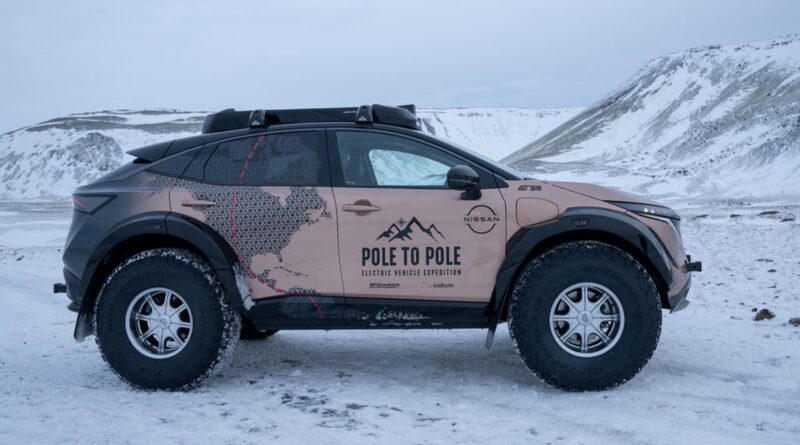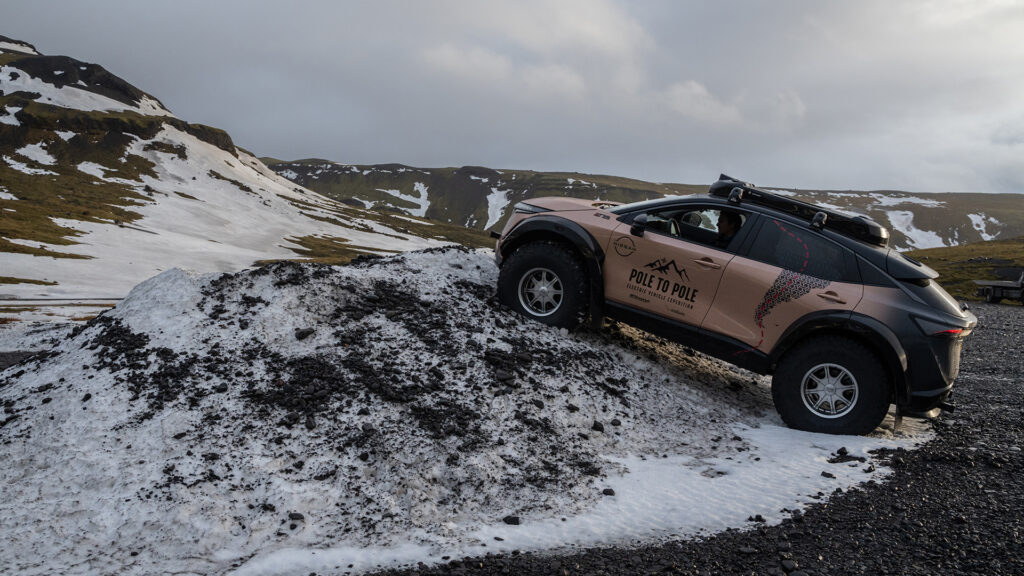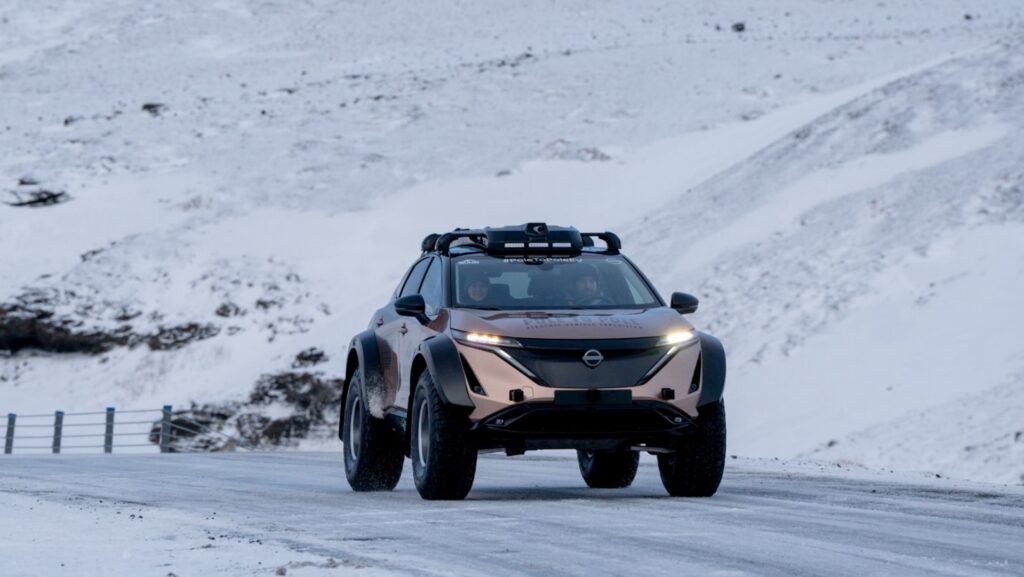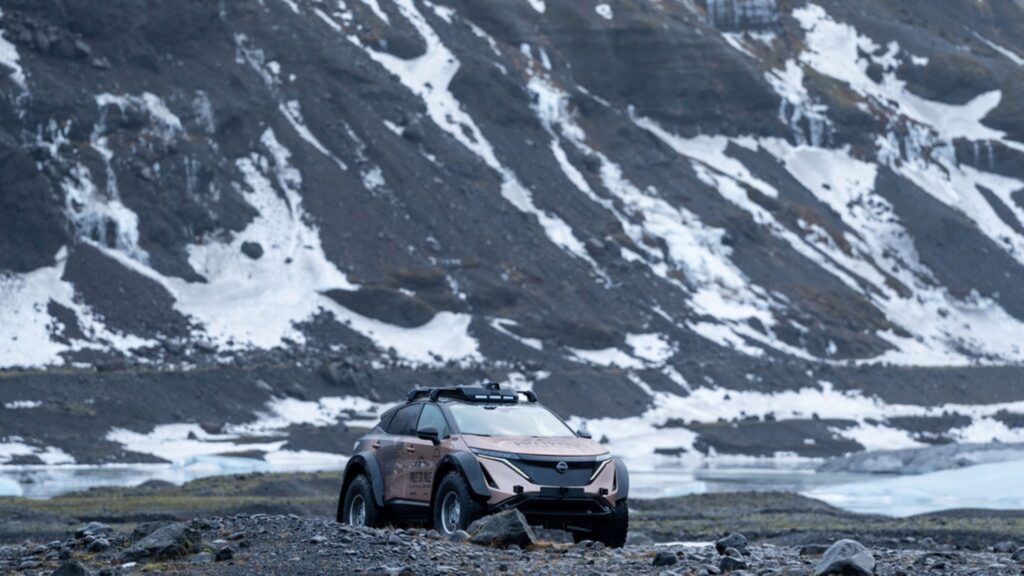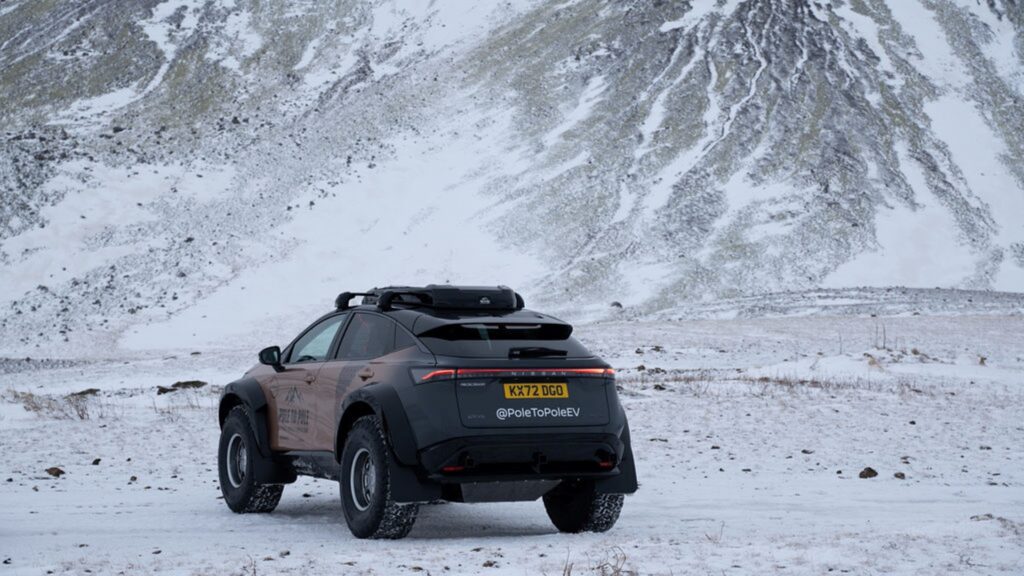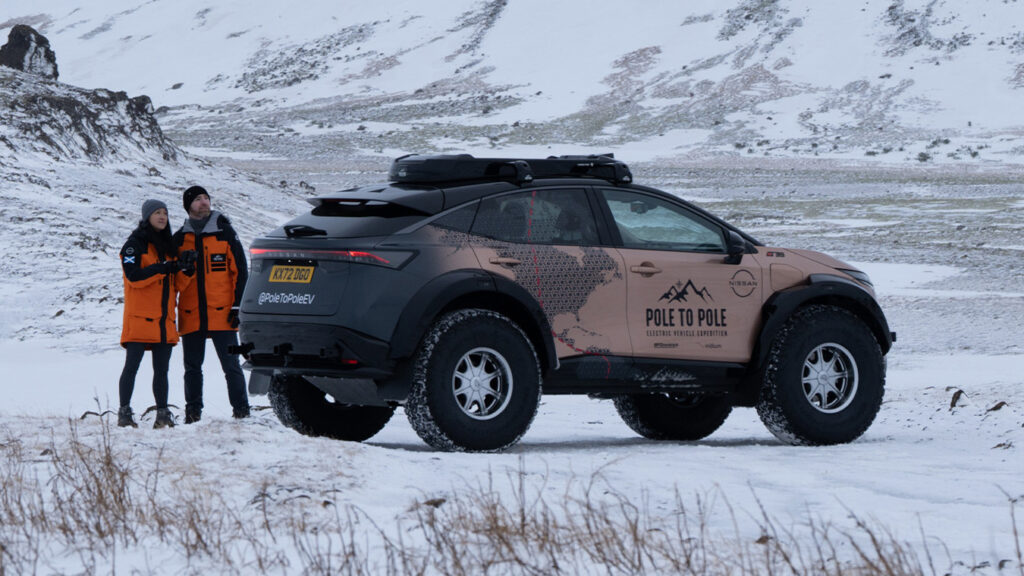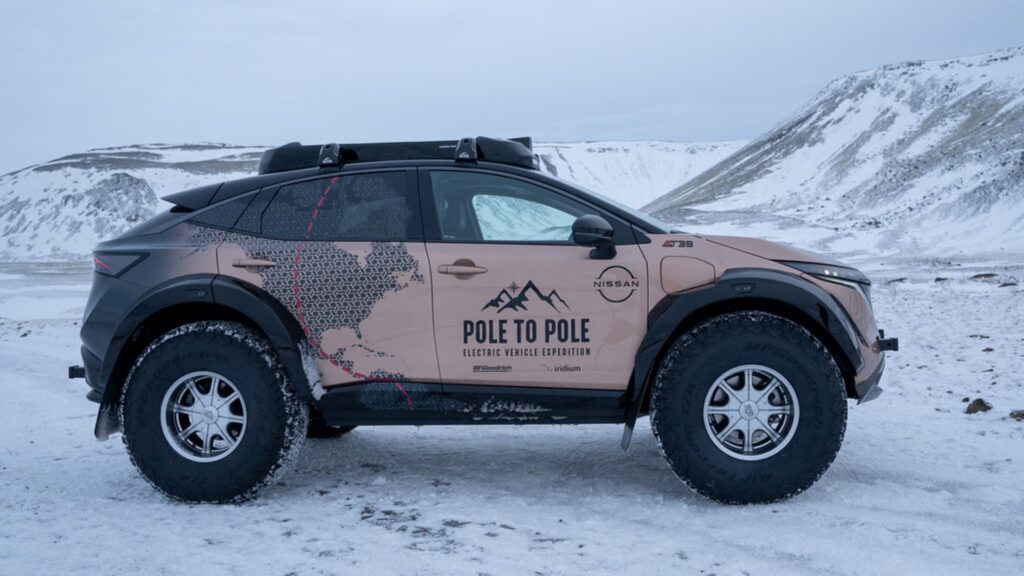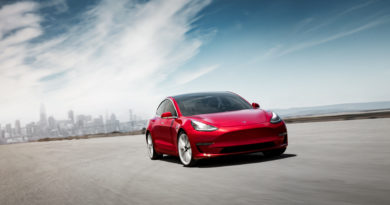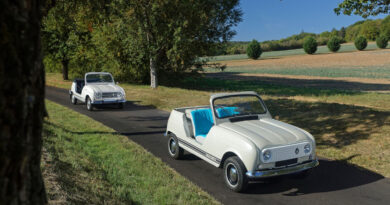27,000km Pole to Pole in a Nissan EV?
What is it with adventurers deliberately making life difficult for themselves?
Like climbing Everest without oxygen, or circumnavigating the globe on a rusty Vespa, how about travelling between the Poles in an electric car?
That’s the 27,000km odyssey, in a Nissan Ariya electric SUV, planned by husband-and-wife team Chris and Julie Ramsey. The attempted journey goes from the magnetic North Pole to the South Pole, taking in ice fields, deep snow, steep mountain climbs and inhospitable desert dunes.

Charging points are hardly plentiful in these icy tundras, and good luck plugging in at a desert servo. More than that, electric car battery life is seriously strangled in cold climates, and it doesn’t get much chillier than those Poles.
Ignoring these challenges for a sec, how good does a tricked-up off-road Ariya look?
Arctic Trucks, specialists in polar expedition vehicles, has collaborated with Nissan design and engineering teams to prepare this Ariya for its epic adventure.
Interestingly, there’s been no changes to the 87kWh battery or 290kW/600Nm powertrain. But mighty 39-inch BF Goodrich tyres, widened wheel arches and specially-adapted raised suspension help make the muscled Nissan EV look a bit more fit-for-purpose.
The vehicle comes with Nissan’s e-4ORCE electric all-wheel-control tech, which will hopefully help conquer most of the extreme terrains.
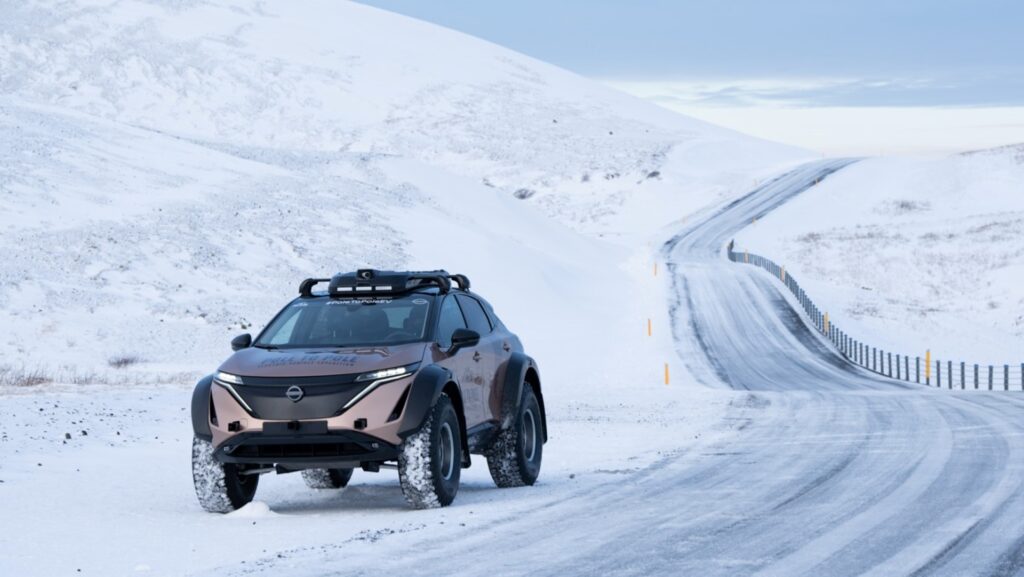
As you’d probably have guessed, this Pole-to-Pole effort – forecast to last 10 months – will be a world first effort for an electric car.
Chris Ramsey, Pole to Pole EV Expedition Leader, said: “One of the things that underpins all the adventures we do is that we take a standard production EV and aim to make minimal changes to clearly demonstrate its real, everyday capabilities, regardless of where you are driving it.”
The pair have previous in EV adventuring. Chris and Julie completed the gruelling 17,000km Mongol Rally in a Nissan Leaf EV.
Extreme EV charging
Right, let’s talk about charging.
The Ariya will be towing a prototype portable renewable energy unit, which includes a packable and lightweight wind turbine and solar panels. These will take advantage of the high winds and polar regions’ long daylight hours.
We’re told these charges will take place when Chris and Julie stop to rest. Which may be quite regularly. If we consider the freezing temperatures, the added weight of the portable energy unit and the less-than-aero wheel and tyre package, range isn’t going to be spectacular, is it?
Road-going Ariyas with the larger 87kWh battery fitted have a range of over 500km, but it’ll be intriguing to learn what the Pole-to-Pole Ariya manages in such extremes.
If they are stuck around waiting for charge (we’ve all endured it testing EVs), the Pole-to-Pole Ariya has an integrated espresso machine, plus a utility unit on the roof to launch a drone. Considering the environments they’ll be in, the footage they’ll capture is sure to be incredible.
On a side note, it’ll also be a proper test for the prototype energy unit. If a production version could hit the market, wouldn’t that open up the possibilities of long-term, long-distance off-grid adventures in Australia when the incoming glut of electric pickups arrive? If it could be incorporated in an off-road camper trailer, all the better.
Still no word on exactly when Aussies will see the launch of the long-delayed Ariya. When we do – hopefully later in 2023 – how about a Pole-to-Pole accessories package please Nissan? Finke Desert Race here we come!
You can follow the Ariya’s journey at the team’s Pole-to-Pole website.

